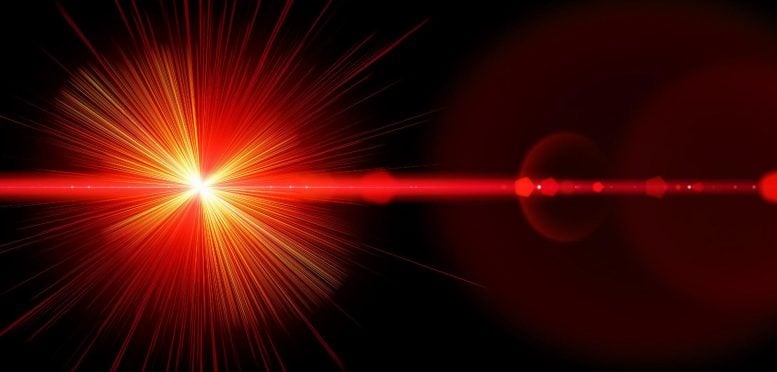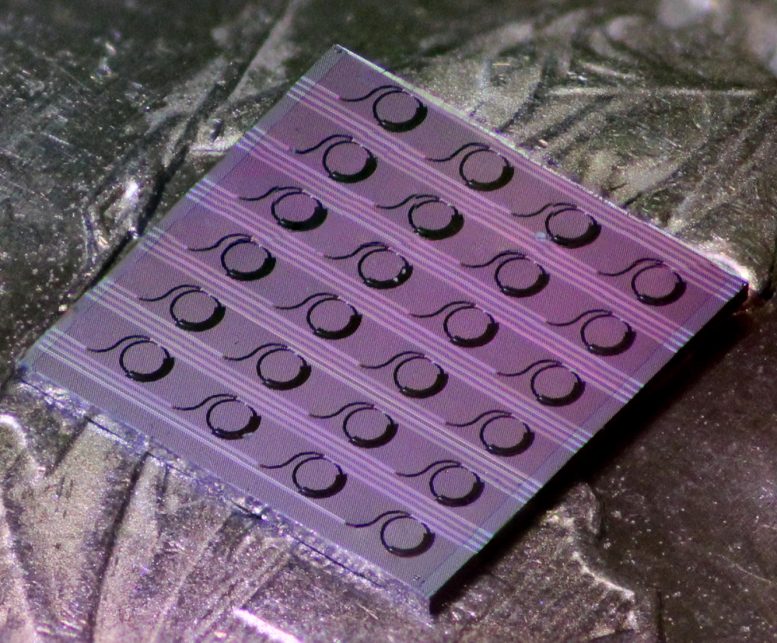
Scientists at EPFL and IBM have created a groundbreaking hybrid integrated tunable laser by combining lithium niobate and silicon nitride, which offers low frequency noise and fast wavelength tuning. This new laser has promising applications in LiDAR, telecommunications, and quantum computing due to its unique combination of properties.
Researchers from EPFL and IBM have created a novel laser that could revolutionize optical ranging technology. This laser is constructed from lithium niobate, a material frequently utilized in optical modulators to regulate the frequency or intensity of light transmitted through a device.
Lithium niobate is highly valued for its ability to manage large amounts of optical power and its high “Pockels coefficient.” This allows the material to alter its optical properties when an electric field is applied to it.
The researchers achieved their breakthrough by combining lithium niobate with silicon nitride, which allowed them to produce a new type of hybrid integrated tunable laser. To do this, the team manufactured integrated circuits for light (“photonic integrated circuits”) based on silicon nitride at EPFL, and then bonded them with lithium niobate wafers at IBM.

A chip developed in the study. Credit: Grigorii Likhachev (EPFL)
The approach produced a laser with low-frequency noise (a measure of how stable the laser’s frequency is) and simultaneously with fast wavelength tuning – both great qualities for a laser used in light detection and ranging (LiDAR) applications. Then they performed an optical ranging experiment where they used the laser to measure distances with high precision.
Beyond integrated lasers, the hybrid platform has the potential to realize integrated transceivers for telecommunications as well as microwave-optical transducers for use in quantum computing.
“What is remarkable about the result is that the laser simultaneously provides low phase noise and fast petahertz-per-second tuning, something that has never before been achieved with such a chip-scale integrated laser,” says Professor Tobias J. Kippenberg, who led the EPFL side of the project.
Reference: “Ultrafast tunable lasers using lithium niobate integrated photonics” by Viacheslav Snigirev, Annina Riedhauser, Grigory Lihachev, Mikhail Churaev, Johann Riemensberger, Rui Ning Wang, Anat Siddharth, Guanhao Huang, Charles Möhl, Youri Popoff, Ute Drechsler, Daniele Caimi, Simon Hönl, Junqiu Liu, Paul Seidler and Tobias J. Kippenberg, 15 March 2023, Nature.
DOI: 10.1038/s41586-023-05724-2
The study was funded by the Horizon 2020 Framework Programme, the Swiss National Science Foundation, and the Air Force Office of Scientific Research.
The chip samples were fabricated in the EPFL center of MicroNanoTechnology (CMi) and the Binnig and Rohrer Nanotechnology Center (BRNC) at IBM Research.









Be the first to comment on "Vast Potential – Researchers Create a New Type of Laser"